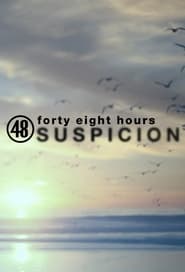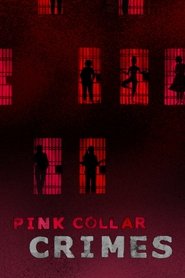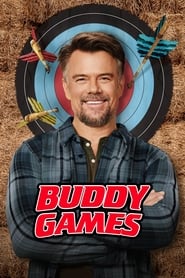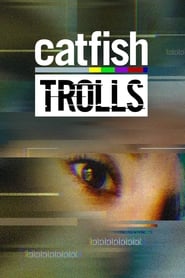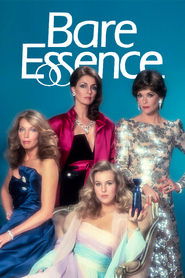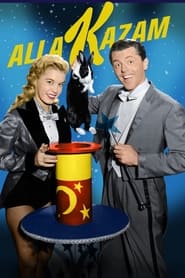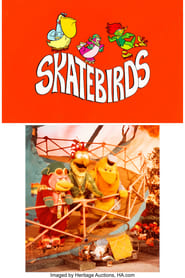Cbs TV Series - Page 63
-
Riker
1981
star 5Riker is an American crime drama television series that aired from March 14 until April 11, 1981. -
Abe Burrows' Almanac
1950
Abe Burrows' Almanac
1950
Abe Burrows' Almanac is an American television series that aired on CBS in 1950. The live program, hosted by Abe Burrows, featured music, song and comedy performances by guests. The show was broadcast on Wednesday evenings at 9:00 PM. Milton DeLugg conducted the orchestra. While Burrows had a successful nightclub act and made regular appearances as a performer on CBS radio programs, this short-lived series is notable for being his only featured role in a television program. -
48 Hours Suspicion
2020
48 Hours Suspicion
2020
48 Hours: Suspicion is a limited-run series from the team at CBS News' award-winning true-crime series 48 Hours. The series features intriguing cases where people live under suspicion, but the truth is often elusive. -
CIA
0000
CIA
0000
When two unlikely partners – a fast-talking, rule-breaking loose cannon CIA case officer, and a by-the-book, seasoned and smart FBI agent who believes in the rule of law – are assigned to work out of CIA's New York Station, they must learn to work together to investigate cases and criminals posing threats on U.S. soil, finding that their differences may actually be their strength. -
Leave It to Larry
1952
Leave It to Larry
1952
Leave It to Larry is a 1952-1953 CBS sitcom starring Eddie Albert as Larry Tucker, a shoe salesman who lives with his own family in the residence of his employer and father-in-law, played by Ed Begley, Sr., in the role of Mr. Koppel. Begley though only five years older than Albert was still cast as the father-in-law. Joining Albert and Begley on the short-lived series were Betty Kean as wife Amy Tucker; Glenn Walken as 7-year-old Stevie Tucker, and Lydia Schaffer as daughter Harriet Tucker in her only acting role. The program aired five years before Jerry Mathers starred in the similarly titled Leave It to Beaver, originally on CBS and later ABC. Leave It to Beaver also had a character named “Larry" – Larry Mondello played by Rusty Stevens, the son of Margaret Mondello, played on the series by character actress Madge Blake. Leave It to Larry aired on Tuesday at 8 p.m. before The Red Buttons Show on CBS and opposite Milton Berle’s Texaco Star Theater on NBC. In the 1953-1954 season, The Gene Aut -
Pink Collar Crimes
2018
star 6The impossible-to-believe, often absurd, true stories about the most unexpected women — PTA moms, country-club chairwomen, and more — who took big risks, pocketed big cash and then served hard time. -
Arthur Godfrey and His Friends
1949
star 6Arthur Godfrey and His Friends is an American television variety show hosted by Arthur Godfrey. The hour-long series aired on CBS Television from January 1949 to June 1957, then again as a half-hour show from September 1958 to April 1959. Many of Godfrey's musical acts were culled from Arthur Godfrey's Talent Scouts, which was airing on CBS at the same time. Among the more popular of his singers were Frank Parker, Marion Marlowe, Janette Davis, Julius La Rosa, Haleloke, The McGuire Sisters, Carmel Quinn, Pat Boone, Miyoshi Umeki and The Chordettes. The show was live, and Godfrey often did away with the script and improvised. He refused to participate in commercials for products he did not believe in. -
Beane's of Boston
1979
Beane's of Boston
1979
Beanes of Boston was a pilot episode for a proposed American adaption of the British sitcom Are You Being Served?. Though written by the original writers of the British series and starring John Hillerman, who would go on to fame in Magnum, P.I., the series was not picked up. -
Buddy Games
2023
star 7Six teams of four friends reunite to compete in an assortment of physical and mental challenges. -
You're On Your Own
1956
You're On Your Own
1956
You're On Your Own was an American game show that aired on CBS from December 22, 1956 to March 16, 1957. Actor Steve Dunne was the emcee, with Hal Simms as the announcer and Joann Jordan was the commercial spokesperson for sponsor Hazel Bishop. You're On Your Own was broadcast from CBS Studio 59, also known as the Mansfield Theatre, in Manhattan. -
The Arthur Murray Party
1950
star 6The Arthur Murray Party is an American television variety show which ran from July 1950 until September 1960. The show was hosted by famous dancers Arthur and Kathryn Murray, and was basically one long advertisement for their chain of dance studios. Each week the couple performed a mystery dance, and the viewer who correctly identified the dance would receive two free lessons at a local studio. The Arthur Murray Party is notable for being one of the few TV series—the others were Down You Go; The Ernie Kovacs Show; Pantomime Quiz; Tom Corbett, Space Cadet; and The Original Amateur Hour—broadcast on all four major commercial networks in the 1950s during the Golden Age of Television. It may, in fact, be the only series which had a run on all four networks at least twice. -
Big Town
1950
star 6Big Town is a popular long-running radio drama series which was later adapted to both film and television and a comic book published by DC Comics. -
Catfish: Trolls
2018
star 6.1The three-week event will explore one of the most pervasive and consistent issues online: internet trolling. Using the "Catfish" brand of investigating the truth, host and executive producer Charlamagne Tha God, and his co-host, social media entrepreneur Raymond Braun, will confront the issue head-on and bring subjects face-to-face with their aggressors for the first time. -
Bare Essence
1982
Bare Essence
1982
Miniseries along the lines of a soap opera which centers on one young woman, Tiger Hayes, as she starts up a perfume company. The usual soap plots of adultery, romance, corruption, and greed abound. -
The Magic Land of Allakazam
1960
The Magic Land of Allakazam was the name of a groundbreaking series of network television shows featuring American magician Mark Wilson. It ran from 1960 to 1964 and is credited with establishing the credibility of magic as a television entertainment. -
Now You See It
0000
star 7Now You See It is an American television game show created by Frank Wayne for Mark Goodson-Bill Todman Productions. Two seasons were produced, and both aired on CBS. The first season ran from April 1, 1974 until June 13, 1975, and was hosted by Jack Narz. The second season ran from April 3 until July 14, 1989 and was emceed by veteran Los Angeles news anchor Chuck Henry. Johnny Olson was the original announcer, with Gene Wood substituting on occasion. Los Angeles disc jockey Mark Driscoll announced for the first month of the 1989 season, with Don Morrow replacing him for the remainder of the run. Although several tweaks to the game were made over the time Now You See It was on the air, the core format remained the same. Contestants competed to find words on a grid that was similar to a word search puzzle that served as answers to questions asked by the host. -
Stage 7
1955
star 7Stage 7 is the title of a United States TV drama anthology series that aired in 1955. This program premiered in December 1954 with the title Your Favorite Playhouse with all episodes being repeats from other series. The program's 25 episodes showcased the talents of actors and actresses such as Charles Bronson, Edmond O'Brien, Gene Barry, Phyllis Coates, Frances Rafferty, Macdonald Carey, and Phyllis Thaxter. Some directing was done by Quinn Martin. -
Hollywood's Talking
1973
Hollywood's Talking
1973
Hollywood's Talking is a short lived American game show based the 60s quizzer, Everybody's Talking, and produced by Jack Barry. It ran on CBS for three months in 1973, debuting on March 26 and ending on June 22 to make room for a new version of Match Game. It was hosted by Geoff Edwards, with Johnny Jacobs announcing. The series was the first national game show hosted by the 42-year-old Edwards, who would become notable for his next two hosting jobs, The New Treasure Hunt and Jackpot!. The program aired at 3:30 p.m./2:30 Central time, opposite ABC's One Life to Live and NBC's Return to Peyton Place. Edwards once said that while hosting this series, he had a tenuous working relationship with Jack Barry. It was not until 1980 that Edwards would host another Barry & Enright game, Play the Percentages. -
The Skatebirds
1977
The Skatebirds
1977
The Skatebirds is a 60-minute show on CBS Saturday mornings from 1977–78, produced by Hanna-Barbera Productions. The Skatebirds lasted only a half-season in its original run from September 10, 1977 to January 28, 1978. In the fall of 1979, the show was cut down to a half-hour by removing The Robonic Stooges and Woofer And Whimper, Dog Detectives and broadcast on CBS Sunday mornings on and off until January 1981. In the late 1980s, a different shortened version of The Skatebirds was shown on USA Cartoon Express and later resurfaced on Cartoon Network and Boomerang. -
Name That Tune
1952
Name That Tune
1952
Name That Tune is an American television game show that put two contestants against each other to test their knowledge of songs. Premiering in the United States on NBC Radio in 1952, the show was created and produced by Harry Salter and his wife Roberta. Name That Tune ran from 1953–1959 on NBC and CBS in prime time. The first hosts were Red Benson and later Bill Cullen, but George DeWitt became most identified with the show. Richard Hayes also emceed a local edition from 1970–1971, which ran for 26 weeks in a small number of markets. However, the best-remembered syndicated Name That Tune aired once a week from 1974–1981 with host Tom Kennedy. The series was revived for daily syndication in 1984, and its lone season was hosted by Jim Lange. For the last two of these series, John Harlan served as announcer. The centerpiece of each Name That Tune series was an orchestra, which would play the songs for the contestants to guess. The syndicated series' orchestras were conducted by Bob Alberti, Tommy


